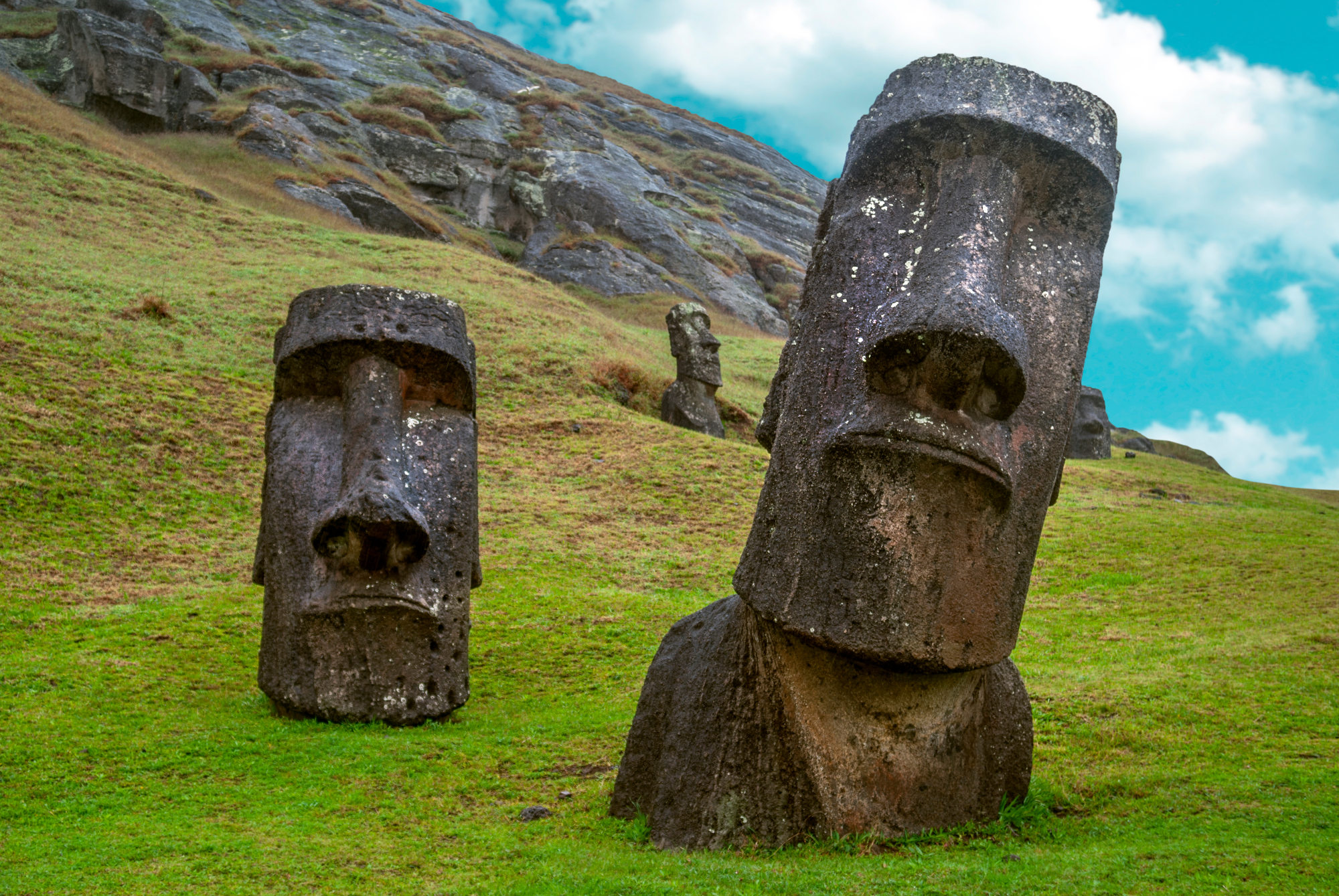It’s hard to exaggerate how isolated Easter Island was before its discovery by Polynesian sailors eight or nine centuries ago. This tiny island, which you can walk round in a day, is thousands of miles in any direction from inhabitable land.
Yet a new study claims that long before the first European ship arrived in 1722, it was reached more than once, and that people sailed back out to other Pacific islands. It seems history’s greatest explorers were even more extraordinary than we first realised.
It seems history’s greatest explorers were even more extraordinary than we first realised
The first inhabitants of Easter Island, or Rapa Nui as it’s known in the Pacific, have had a bad press. For decades the narrative has been that they cut down all the trees, causing soil erosion and an environmental catastrophe, which led to starvation and wars. Though academics have challenged the thesis (with good reason, in my view), it lives on in books and podcasts as a lesson to the rest of us. Look after our world: it’s the only one we have.
The new research avoids this issue. Paul Wallin and Helene Martinsson-Wallin, archaeologists at Uppsala University in Sweden, writing in the journal Antiquity, have looked instead at the island’s other claim to fame: its thousand huge statues and the elaborate drystone platforms on which many of them were raised. Assembling a list of radiocarbon dates obtained from excavations – some, their own – across the south-eastern Pacific, they set out to chart centuries of exploration and settlement. In the process, they found Easter Island to be less isolated than had been assumed.
Ocean exploration began a thousand years ago in West Polynesia, among islands such as Tonga and Samoa, when people sailed eastwards to Tahiti and its neighbouring islands. From there they navigated the vast triangle of East Polynesia, reaching Hawai‘i, Easter Island and, finally, New Zealand, within two centuries.
To put that into perspective, around the same time in Europe, the Viking Age was coming to an end. Scandinavian sailors mostly explored coasts and rivers, occupying places already lived in. All they had to do was take over villages and farms nurtured by generations of native peoples. Polynesians, by contrast, entered uncharted seas no human had ever seen, where a thousand islands were scattered across 14 million square miles of some of the most dangerous waters on Earth. Every time they discovered a new island, they had to build their lives from scratch, having brought with them people, cultivated plants like yams and taro, and breeding pigs, dogs and chickens. In the eighteenth century Captain Cook recorded ocean-going canoes as long as a classical Greek trireme or his own Endeavour – with two hulls and crews to match. There have never been more accomplished or daring seafarers.
Where the archaeologists part from traditional ideas about this great diaspora, is with what happened next. And that, they say, means seeing Easter Island in a new light.
It had long been thought that after it was discovered, it was on its own. Too distant from the colonising islands for frequent return journeys, it had no close neighbours. Other islands tend to belong to large groups, like Hawai‘i, which officially has 137 islands, and whose population grew to half a million or more with hereditary kings and priests and full-time armies. Rapa Nui was seen as a backwater.
Or perhaps not. Not long after the initial ocean colonisation, Islanders throughout the south-eastern Pacific started to build impressive temple-like constructions known as marae. These were old ritual spaces newly monumentalised in stone, with paved platforms and small standing megaliths. According to the new study, the idea for these marae originated in Easter Island, where power struggles in a growing population stimulated by contacts with other communities were creating a divided society.
These contacts were with both other Polynesians to the west, and South Americans to the east. As well as the wide spread of complex marae, another consequence of this was the adoption of the sweet potato, a continental American crop, as a staple food across the Pacific. On Easter Island the changes ultimately led to the carving of enormous statues in human form. This probably began as a common Polynesian practice of shaping figures from tree trunks, which was later transferred to stone: at one place on the island is a great outcrop of volcanic tuff, unusually soft and easy to shape, and now a hollowed-out mass of statue quarries. Like the marae, the idea for these statues was then carried to the west, but only to the nearest islands, such as the Marquesas, and on a much-reduced scale.
I’m familiar with Polynesian archaeology, and much of this argument feels realistic. There is recent evidence from human DNA to support the idea that Easter Islanders had contact with peoples both to west and east. However, that does not mean, it seems to me, that South Americans ever managed to reach Easter Island, as some researchers claim. The DNA links could easily have come from Polynesians travelling to South America and back. And there is otherwise no evidence of early Americans reaching the wider Pacific.
Nonetheless, the reminder that Easter Island and its people were part of a wider whole is timely. In late June this year, the Hōkūle‘a, a modern replica of an ancient ocean-going canoe, reached Tahiti from Hawai‘i. After circling the entire Pacific, it hopes to arrive in Rapa Nui in 2028. The modern journey is remarkable. Centuries ago, such voyaging was even more so.








Comments